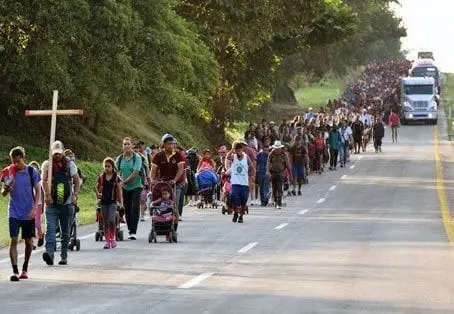On Mexico’s southern border, the migration crisis has become a ticking time bomb. With nearly a thousand migrants arriving daily, mainly from Central and South America, the lack of effective migration policies has left around 45,000 people stranded in the state of Chiapas, particularly in cities like Tapachula and Tuxtla Gutiérrez.
The migrants, mostly in transit to the United States, are trapped by bureaucracy, saturation of migration routes and the absence of adequate shelters. Many of them have chosen to set up makeshift camps in parks, sidewalks and other public spaces in Tuxtla Gutiérrez, which has generated tensions with local residents. These communities have begun to demonstrate demanding the relocation of migrants, citing public health and security problems.
On November 8, residents of at least 10 neighborhoods in southern Tuxtla blocked one of the main roads, the Libramiento Sur, demanding the authorities’ attention to what they describe as unhealthy and unsafe conditions generated by migrant camps.
Authorities, in response to the demonstrations, promised to census the camps and relocate the migrants to safe spaces, in addition to implementing security operations in the affected areas. However, the situation remains tense, as the problem of the migratory flow has not diminished.
The recent eviction of nearly 300 migrants from parks in Tuxtla Gutiérrez is a reflection of the saturation of migratory routes in the region. Despite these actions, desperation among migrants increases.
In addition, uncertainty about the future of migration in the United States, especially with the return of Donald Trump to the presidency, has generated nervousness among migrants who see the possibility of losing their opportunity to enter the country.
The migrant caravans that recently left Tapachula and Tuxtla Gutiérrez are among the largest recorded under the current Mexican government. However, with Trump’s victory, migrants feel they are racing against time to fulfill their dream of reaching the United States.
The situation on the southern border remains unresolved, while the migratory flow increases and solutions seem more distant. Mexican and U.S. authorities face the challenge of managing a humanitarian crisis that affects both migrants and local communities.
Source: elciudadano




